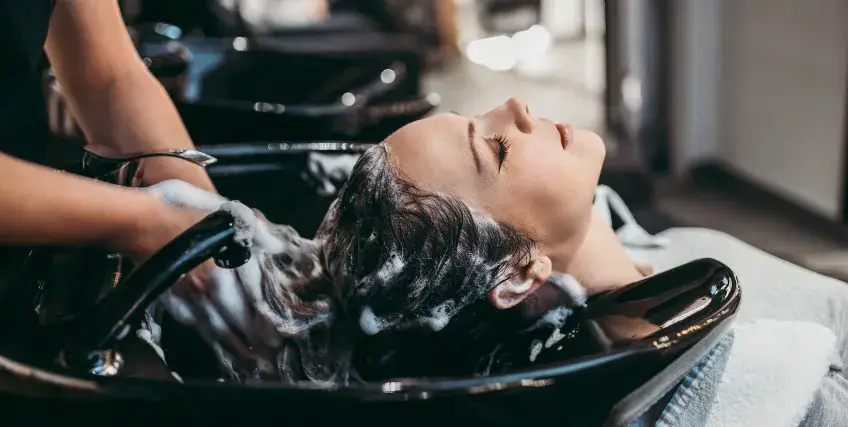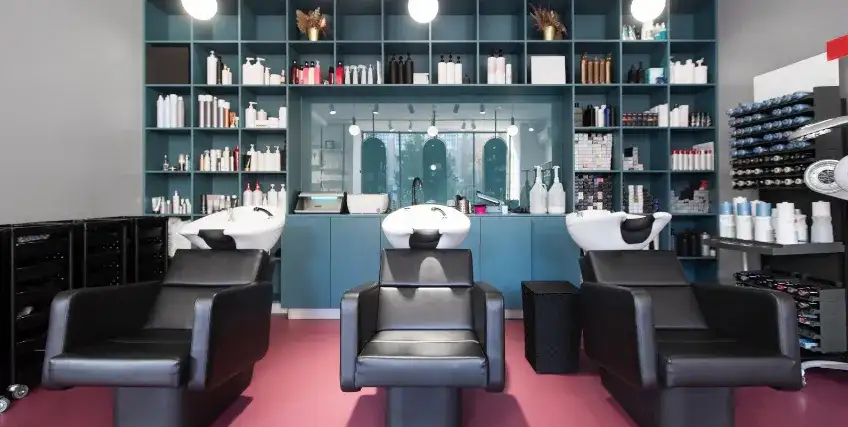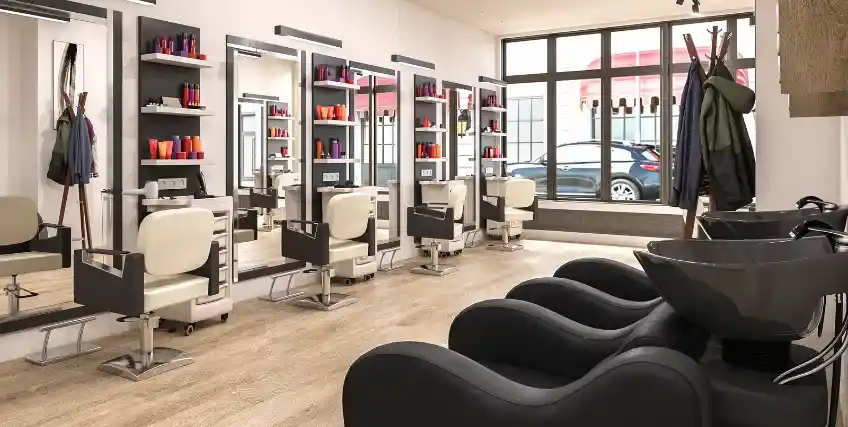How Inventory-Heavy Beauty Salons Can Benefit from Asset-based Loans
July 01, 2025 | Last Updated on: July 01, 2025

Beauty salons don’t just earn from haircuts and facials. Many upscale salons carry thousands of dollars in high-end inventory like shampoos, skincare, styling tools, and imported color treatments. Add to that expensive salon chairs, mirrors, and dryers, and you've got real capital tied up in physical assets.
However, this capital isn’t liquid and when a salon owner needs cash to upgrade equipment, add staff, or expand locations, traditional loans might not be ideal.
This is where asset-based loans step in. Instead of relying on credit scores or monthly revenue, these loans use the value of what a business already owns: inventory, equipment, accounts receivable, and more. For salons with shelves full of branded products or expensive tools, that’s good news.
In this guide, we’ll explain how asset-based loans work for salons, how to qualify, when they make sense, and what to watch out for. Whether you’re planning to open a second outlet or just need better cash flow management, you’ll see why tapping into your business assets can be a smart financial move.
We’ll also show how this differs from income based business loans, which rely on monthly revenue instead of physical assets. If your balance sheet is strong but your monthly income fluctuates, asset-based loans may offer the flexibility you need.
Let’s break down how beauty salons can turn inventory into opportunity.
What are Asset-based Loans?
Asset-based loans are loans secured by a business's existing assets. These assets can include inventory, equipment, accounts receivable, and in some cases, even commercial real estate.
Unlike traditional term loans, which are based on credit history and income, asset-based lending focuses on the value of what a business owns. That makes them more accessible to salon owners with strong balance sheets but inconsistent cash flow.
The process is simple: a lender reviews your business assets, assigns a value, and provides a loan based on a percentage of that value. This is often known as the loan-to-value (LTV) ratio. For example, you might receive 70% of your inventory’s value or 80% of your accounts receivable.
Unlike income based business loans, which require strong monthly revenue and documentation, asset-based loans provide capital even when income is seasonal or inconsistent.
For beauty salons, this can be a great fit. You may not always have steady income month-to-month, but your shelves are stocked with branded products, and your equipment holds high residual value.
Asset-based commercial loans are especially useful for businesses that are growing quickly or going through a transition like opening a new location, rebranding, or investing in new treatments.
To qualify, you’ll need clear documentation of your assets, a clean record of ownership, and updated inventory or equipment valuations. Lenders may also look at your business’s overall financial health to determine the loan terms.
Why Salons are Ideal for Asset-based Lending
1. Product Inventory as Loan Collateral
Many salons carry high-end retail products—from shampoos and conditioners to serums and styling sprays. These items are often sourced in bulk, increasing their inventory value. Since these goods are easily tracked and appraised, they can be used to secure asset-based loans. This gives salon owners the ability to free up tied cash and reinvest it into marketing, staffing, or customer experiences.
2. Expensive Tools and Equipment
Hairdryers, microdermabrasion machines, salon chairs, and laser devices aren’t cheap. These durable items hold real asset value. In asset-based lending, such physical assets can be used to access capital without selling or leasing them. Instead of gathering dust, they work to improve liquidity and support long-term growth.
3. Advance Bookings and Prepaid Packages
Many beauty salons operate on advance appointments, prepaid memberships, or packages. These receivables represent future income and can be used as collateral in asset-based commercial loans. If booked slots are backed by digital systems, lenders can verify the pipeline and assign loan value accordingly.
How Asset-based Loans Work for Beauty Salons
Once you decide to apply for asset-based loans, the process begins with identifying eligible business assets. These could be your stocked inventory, equipment, or prepaid customer orders. The next step is documentation. You’ll need updated inventory lists, equipment receipts or depreciation records, and, if using accounts receivable, a clear ledger of prepaid services.
Lenders then assign a value to these assets using standard appraisal methods. For example, inventory may be valued at wholesale cost rather than retail price. Salon equipment is often valued based on condition, depreciation, and brand.
Loan-to-value ratios typically range from 60% to 85%, depending on the type of asset. Inventory usually gets a lower ratio than equipment or accounts receivable due to shelf-life concerns.
Let’s say your salon holds $50,000 worth of branded products. A lender may offer you $30,000–$35,000 based on the LTV ratio. This capital can then be used as working capital to cover expenses, hire staff, or expand services.
Repayment terms depend on the loan structure. Some asset-based loans are structured as a revolving line of credit. This means you can draw funds as needed and repay flexibly, much like credit cards. Others operate as lump-sum loans with set terms.
You might also be asked to maintain certain financial covenants, such as keeping inventory above a specific level or ensuring a minimum asset turnover ratio.
Unlike income based business loans, approval here doesn’t hinge on monthly cash flow but rather the appraised value of business assets. That makes them more accessible to salons that see seasonal dips or are expanding.
Finally, while rates may be slightly higher than bank loans, they’re often lower than unsecured lending products.
Top Use Cases for Salon Owners
Asset-based loans aren’t just for emergencies. Here are some smart ways salon owners use them to build and scale.
1. Inventory Expansion
Buying more inventory during promotional seasons or holidays? Use your current stock to get capital and stay well-stocked. This helps improve sales while keeping cash flow steady.
2. Equipment Upgrades
Need a new facial machine or ergonomic chairs? Tap into the value of your existing tools to fund upgrades that keep your salon competitive.
3. Slow Season Management
Use asset-based loans to cover rent and salaries during low footfall months without dipping into personal savings or taking out personal loans.
4. Salon Expansion or Renovation
Opening a second location or upgrading interiors? Instead of waiting to save, finance it using a business asset loan against existing equipment and inventory.
Pros and Cons of Asset-based Loans
Asset-based loans offer flexible financing but also come with trade-offs. Weigh these before applying.
Pros
1. asier Access to Capital
Salon owners with weaker credit scores but strong inventory can still qualify, unlike many traditional business loan options.
2. Flexible Loan Amounts
The more assets you have, the more funding you can access. This helps match loan size to your actual business needs.
3. aster Approvals
With the right documentation, ABL financing processes can be quicker than traditional underwriting.
Cons
1. Asset Seizure Risk
If you default, the lender may seize your salon equipment or inventory to recover losses.
2. Ongoing Monitoring
Many lenders conduct periodic revaluations. This can disrupt day-to-day operations and requires detailed inventory management.
3. Lower Loan-to-Value for Inventory
Compared to equipment or accounts receivable, inventory often gets lower valuation due to expiration or obsolescence.
Choosing the Right Asset-based Loan Partner
Not every financier understands salons. So, finding the right partner is key.
When searching for the best asset-based lenders, look for those with experience working with service-based businesses. Ask about the types of assets they accept, their appraisal process, and if they offer a revolving line of credit or lump sum.
Review their fee structure. Some charge appraisal or management fees that eat into your capital. Check for hidden costs and ensure terms align with your repayment ability.
Look into their history with beauty businesses. Have they funded similar models? Do they understand seasonal revenues and prepaid packages?
A good financing partner should offer clear timelines, simple eligibility criteria, and fast communication. Also, check that they are FDIC insured or work with registered broker-dealers.
Lastly, compare rates. Asset-based commercial loans may come with higher interest rates than traditional loans, but if you’re getting flexible terms and higher limits, they may be worth it.
Conclusion
High-end beauty salons already hold valuable assets. Why not use them?
Asset-based loans let you turn inventory and equipment into working capital. You don’t need to give up equity or overextend with credit cards.
If your business owns physical assets and you’re ready to expand, renovate, or just cover the lean season; this financing solution can work well. Unlike income based business loans, you don’t need steady cash flow to qualify.
With the right planning and partner, asset-based financing can be a reliable growth tool.
FAQs About Salon Inventory Optimization
1. Can salons use product inventory for asset-based loans?
As long as your inventory is documented, appraised, and non-expired, many lenders accept it as collateral. Beauty salons with shelves full of high-value products can use these items to secure asset-based loans and unlock working capital for expansion, staffing, or upgrades.
2. How is a business asset loan different from a personal loan?
A business asset loan uses your salon’s inventory, equipment, or receivables to secure financing. In contrast, personal loans are based on your credit score and income. Asset-based loans allow salon owners to leverage what they already own, without risking personal credit lines or assets.
3. Are there any risks with asset-based lending?
Like any secured loan, asset-based loans carry the risk of losing your assets if you default. Lenders may seize salon equipment or inventory. It's crucial to read the terms, understand your repayment capacity, and only borrow what your business can responsibly handle.
4. Are asset-based loans better than income based business loans?
If your monthly revenue is inconsistent but your salon holds valuable inventory or equipment, asset-based loans may offer better terms and higher funding than income based business loans tied to regular cash flow.
5. What types of assets do salons usually use?
Salons typically use product inventory, high-value styling equipment, and advance bookings as collateral for asset-based loans. Some also include accounts receivable from prepaid memberships. These assets help improve loan eligibility and increase the loan amount available to salon owners.
Frequent searches leading to this page
Term Loans are made by Itria Ventures LLC or Cross River Bank, Member FDIC. This is not a deposit product. California residents: Itria Ventures LLC is licensed by the Department of Financial Protection and Innovation. Loans are made or arranged pursuant to California Financing Law License # 60DBO-35839




